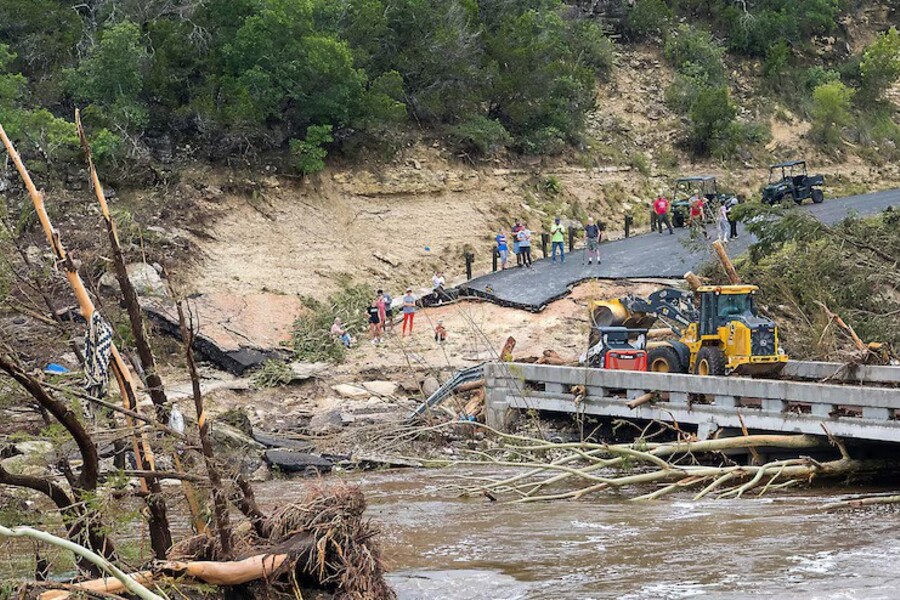As the Guadalupe River surged past its banks last week and devastating floods claimed dozens of lives in central Texas, residents of Kerr County were left asking a painful question: Could this have been prevented?
An extensive review of public records and meeting transcripts by ABC News reveals that local officials have been discussing the need for a robust flood warning system in Kerr County for nearly a decade. Yet despite repeated warnings, studies, and proposals, no fully implemented system was in place when tragedy struck.
Since as early as 2016, flood risks have been a recurring topic at Kerr County Commissioners’ Court meetings. With the Guadalupe Basin running through the heart of the region and a history of sudden, violent floods, local leaders knew they were vulnerable. That year, Kerr County joined the City of Kerrville and the Upper Guadalupe River Authority (UGRA) to initiate a formal process seeking engineering solutions for a flood detection and warning system.
Commissioner Jonathan Letz was blunt at the time: “We are very flood-prone, we know that. Probably Precinct 4 has [the] most risk of the public out there,” he said in a public meeting.
Despite this awareness, progress has been slow and piecemeal. The recent deadly floods have placed a renewed spotlight on the delays and indecision that have plagued mitigation efforts.
A Request for Qualifications was issued in August 2016, seeking expert input on flood risk and mitigation strategies. That led to a $50,000 preliminary report commissioned in September 2016, which painted a stark picture of the county’s vulnerability. The engineering firm concluded that Kerr County “has a greater risk of flash flooding than most regions of the U.S.” and cited a 2015 flood event in a neighboring county where the river rose 20 feet in under an hour, killing 13 people—including children.
The report emphasized that “heavy rains can quickly result in fast-moving water with great destructive potential,” and recommended urgent steps including installation of high-water detection systems, visual water gauges at low-water crossings, and a centralized communication system for real-time flood warnings. The proposed improvements carried an estimated cost of $976,000. But that plan stalled.
Meeting notes from January 2017 show a lack of consensus. Commissioner Thomas Moser remarked that they might “just forget the whole project” if other entities didn’t participate. County Judge Tom Pollard agreed, replying, “Just dead in the water.”
Despite clear evidence and state-level encouragement to develop early warning systems, Kerr County did little to move the project forward in the ensuing years.
In 2024, concern flared again. The Upper Guadalupe River Authority held discussions in April about implementing a flood warning system. On April 17, the UGRA Board of Directors unanimously approved selecting Kisters, a hydrological data firm, to develop a system. The initial contract was valued at nearly $73,000.
But the status of that project is unclear. Neither UGRA nor Kisters has responded to media inquiries about its current progress or timeline.
In the meantime, the region remained largely reliant on outdated infrastructure. According to the earlier engineering assessment, the existing system—which monitored water levels in 20 flood-prone zones—was “antiquated” and unreliable.
When torrential rains fell in Kerr County last week, the Guadalupe River rose with terrifying speed. Flash floods surged through Camp Mystic in Hunt, Texas, sweeping away cabins and campers. At least 104 people are now confirmed dead across the Texas Hill Country region, with 84 fatalities in Kerr County alone. Camp Mystic accounted for 27 of the deaths, including children and counselors.
The tragedy has underscored what some officials had feared all along: Without a timely, reliable flood warning system, people simply don’t have enough time to escape.
“The risk to life by floodwaters is imminent,” warned the 2016 engineering study, advocating for the very system that still hasn’t been built. The report went so far as to say that “an effective Flood Warning System would potentially allow property owners to vacate properties where risk to life is imminent.”
The issue isn’t just about funding, but also about mindset. In prior years, some former officials believed sirens or centralized alert systems were unnecessary. According to records obtained by ABC, a number of county leaders thought informal methods, such as phone trees or verbal warnings, would suffice in emergencies.
Experts say that belief is dangerously outdated. Flash floods can develop in minutes, often at night, and local communication breakdowns can be deadly if people are not woken in time or if messages do not reach remote areas.
The Texas Water Development Board had previously identified communities like Kerr County as high priorities for early warning systems due to their unique vulnerability. The board emphasized that local, state, and federal coordination was critical to deploying infrastructure that could save lives.
Yet even with financial support available and federal emphasis on disaster preparedness, years of inertia allowed a dangerous gap to remain.
What’s especially frustrating to many locals is that this was a known issue. Multiple parties—the County, the City of Kerrville, and the UGRA—all acknowledged the same risk. Still, concrete steps stalled.
As grieving families demand answers, pressure is mounting on Kerr County leaders to explain why no flood warning system was ready, especially when the need had been recognized so long ago.
Community members are now calling for renewed urgency to implement the recommendations made years earlier. With climate change increasing the frequency and intensity of extreme weather events, experts say there is no time left for indecision.
The tragedy has also prompted a broader conversation across Texas about infrastructure modernization and preparedness. Many counties face similar vulnerabilities—and similar histories of stalled action.
For Kerr County, the hope is that this time, talk will finally turn into action.

